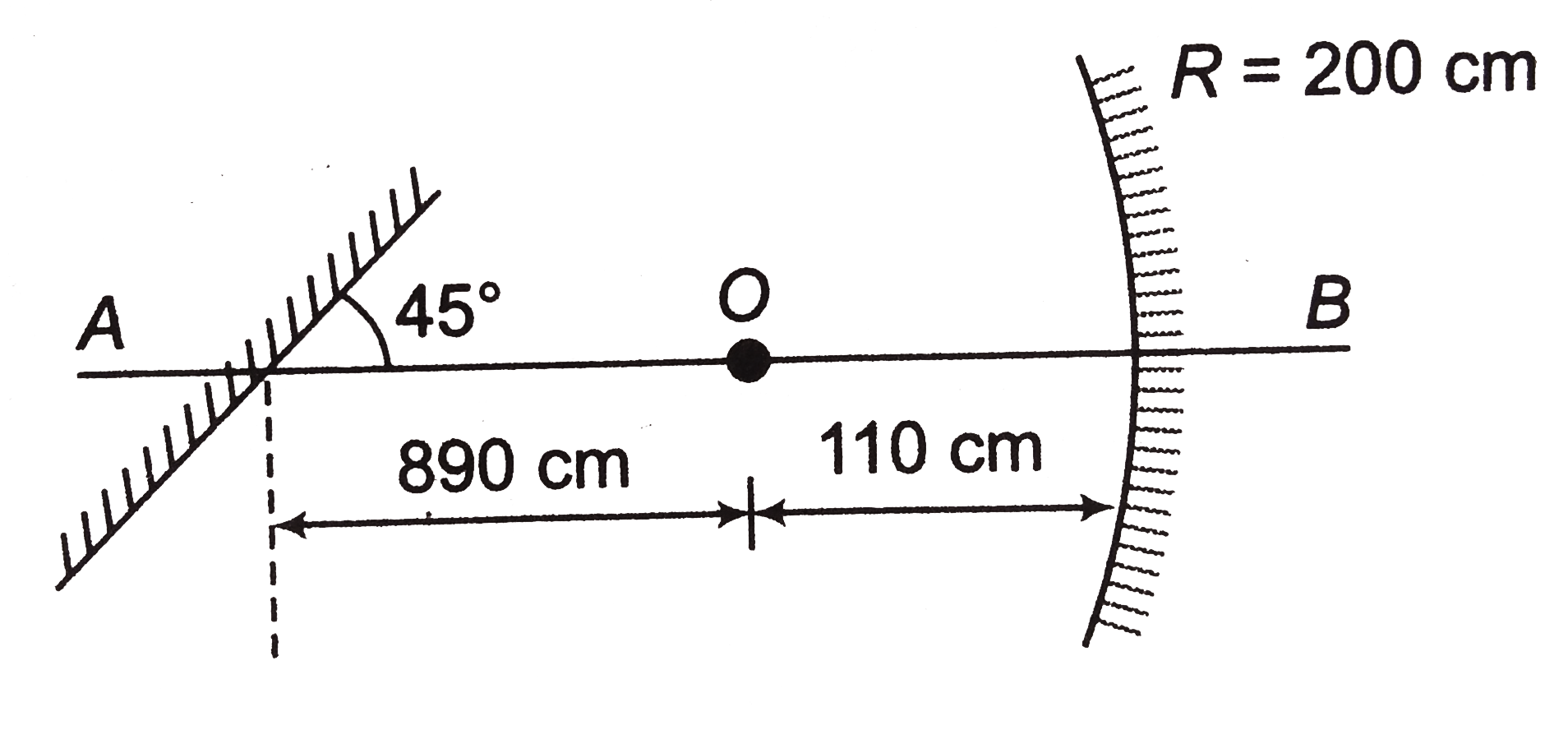How is the position of an image related to the position of the object in a plane mirror ?
To understand how the position of an image is related to the position of an object in a plane mirror, we can break it down into the following steps:
1. Understanding the Setup:
- Consider a plane mirror placed vertically.
- Place an object (let's say an arrow or a person) in front of the mirror.
2. Identifying Distances:
- Let the distance of the object from the mirror be denoted as 'd'.
- The image formed by the plane mirror will also appear to be at a distance 'd' behind the mirror.
3. Image Position:
- The image in a plane mirror is formed at the same distance from the mirror as the object is in front of it.
- Therefore, if the object is at a distance 'd' from the mirror, the image will be at a distance 'd' behind the mirror.
4. Direction of Image:
- The image is located in a direction opposite to that of the object.
- If the object is in front of the mirror, the image will appear behind the mirror.
5. Conclusion:
- Thus, we can conclude that the position of the image is directly related to the position of the object in such a way that:
- The distance of the object from the mirror is equal to the distance of the image from the mirror.
- The image and the object are equidistant from the mirror but located in opposite directions.
Final Statement:
In summary, the position of an image in a plane mirror is such that it is located at the same distance behind the mirror as the object is in front of it, and they are aligned in opposite directions.
---
- Consider a plane mirror placed vertically.
- Place an object (let's say an arrow or a person) in front of the mirror.
- Let the distance of the object from the mirror be denoted as 'd'.
- The image formed by the plane mirror will also appear to be at a distance 'd' behind the mirror.
- The image in a plane mirror is formed at the same distance from the mirror as the object is in front of it.
- Therefore, if the object is at a distance 'd' from the mirror, the image will be at a distance 'd' behind the mirror.
- The image is located in a direction opposite to that of the object.
- If the object is in front of the mirror, the image will appear behind the mirror.
- Thus, we can conclude that the position of the image is directly related to the position of the object in such a way that:
- The distance of the object from the mirror is equal to the distance of the image from the mirror.
- The image and the object are equidistant from the mirror but located in opposite directions.
In summary, the position of an image in a plane mirror is such that it is located at the same distance behind the mirror as the object is in front of it, and they are aligned in opposite directions.
Topper's Solved these Questions
- LIGHTBook:ICSEChapter:LIGHTExercise:TOPIC 1 Reflections of Light (4 Marks Questions )
Explore 10 Videos
- LIGHTBook:ICSEChapter:LIGHTExercise:TOPIC 2 Spherical Mirrors (2 Marks Questions )
Explore 22 Videos
- LIGHTBook:ICSEChapter:LIGHTExercise:TOPIC 2 Spherical Mirrors (4 Marks Questions )
Explore 9 Videos
- LAWS OF MOTIONBook:ICSEChapter:LAWS OF MOTIONExercise:EXERCISE - 3(E) (Numericals)
Explore 31 Videos
- MAGNETISM Book:ICSEChapter:MAGNETISM Exercise:EXERCISE-10(B) (Multiple Choice Type)
Explore 2 Videos
Similar Questions
How is the position of image related to the position of the object for concave mirror of focal length f?
View SolutionHow is the position of image formed by a plane mirror related to the position of the object ?
View SolutionImage of an object in a convex mirror is
View SolutionA plane mirror and a concave mirror are arranged as shown in figure and O is a point object, Find the position of image formed by two reflection, first one talking place at concave mirror.

View SolutionDraw a ray diagram showing the formation of image of a point object by a plane mirror.
View SolutionAn object placed in front of a concave mirror of focal length 0.15 m produces a virtual image, which is twice the size of the object. The position of the object with respect to the mirror is
View SolutionA spherical mirror is to be used to form on a screen 5.0 m from the object an image five times the
size of the object.
(a) Describe the type of mirror required.
(b) Where should the mirror be positioned relative to the object?
View SolutionA linear object is placed on the axis of a lens. An image is formed by refraction in the lens. For all positions of the object on the axis of the lens, the positions of the image are always between the lens and the object.
(i) Name the lens.
(ii) Draw a ray diagram to show the formation of the image of an object placed in front of the lens at any position of your choice except infinity.
View SolutionThe magnification of an image by a convex lens is positive only when the object is placed
View SolutionThe image of a real object formed by a plane mirror is -
View Solution